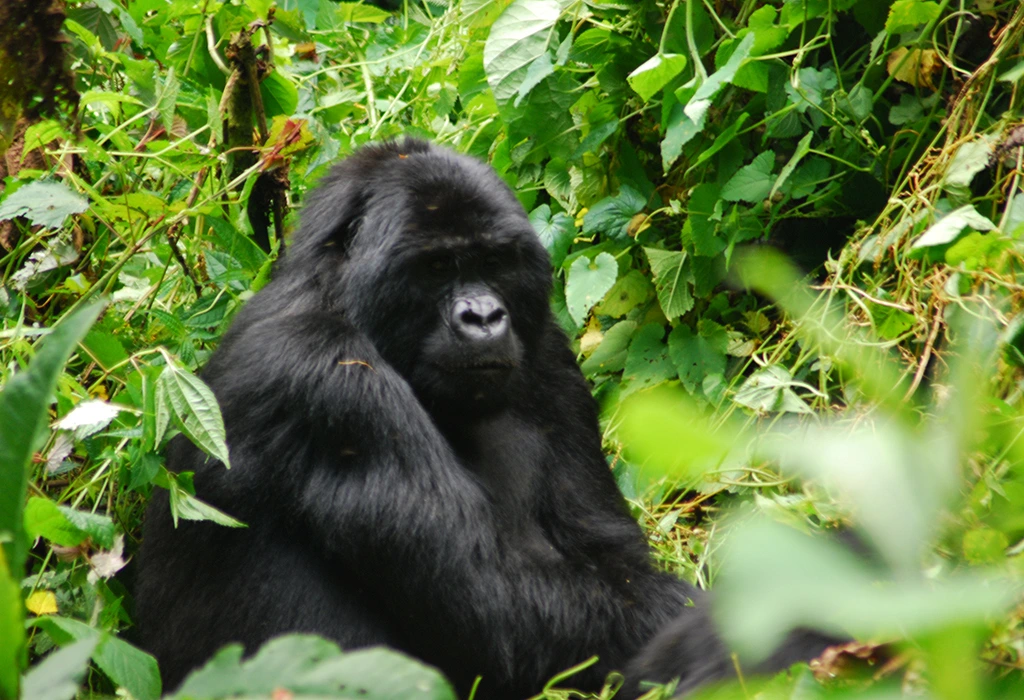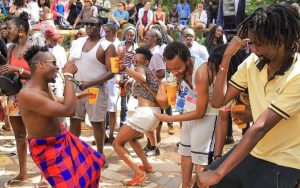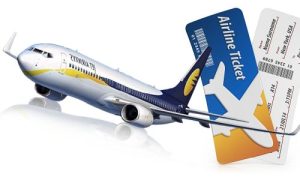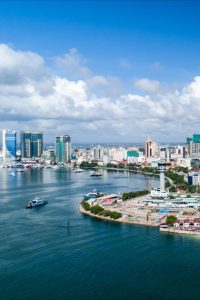Close Encounters with Mountain Gorillas in the Wild. For many nature lovers, wildlife photographers, and adventurers alike, few experiences compare to a close encounter with mountain gorillas in the wild. Hidden deep within the misty forests of East and Central Africa, these majestic primates—our closest living relatives—move with a quiet strength and surprising gentleness. Observing a silverback standing tall among the foliage, or watching an infant gorilla clinging tightly to its mother, is not just an incredible wildlife sighting it is an emotional, humbling, and soul-stirring moment that etches itself into your memory forever.
Mountain gorillas, a critically endangered subspecies of the eastern gorilla, inhabit only a small pocket of the world. Found exclusively in the high-altitude rainforests of Rwanda, Uganda, and the Democratic Republic of Congo, they are among the rarest primates on Earth. Yet through carefully regulated gorilla trekking tourism, a select number of travelers are granted the privilege of witnessing them up close. This form of conservation tourism not only funds essential wildlife protection but also supports local communities and sustainable development initiatives.
Let’s dive into the full scope of this transformative journey—where to go, what to expect, how to prepare, and why it’s a must for your global bucket list.
Where Mountain Gorillas Roam: The Last Wild Strongholds
Mountain gorillas are found in only two primary habitats: the Virunga Mountains, a chain of volcanoes that spans the borders of Rwanda, Uganda, and the DRC; and the Bwindi Impenetrable Forest in southwestern Uganda. These regions have been designated as national parks and are fiercely protected for the preservation of their biodiversity and fragile ecosystems.
- Volcanoes National Park, Rwanda: This park is renowned for its accessibility, well-maintained trails, and luxury eco-lodges. It was here that Dian Fossey, the famous primatologist, conducted her groundbreaking work with mountain gorillas.
- Bwindi Impenetrable National Park, Uganda: As the name suggests, Bwindi is a rugged, dense rainforest filled with incredible biodiversity. It is home to nearly half of the world’s remaining mountain gorillas and offers a more adventurous, immersive experience.
- Mgahinga Gorilla National Park, Uganda: This smaller park lies within the Virunga range and offers treks that are equally rewarding but less crowded.
- Virunga National Park, DRC: While tourism in the DRC comes with some political and safety challenges, Virunga remains one of the most biologically diverse parks in the world and is a compelling option for more daring travelers.
The Trek: From Forest Floor to Gorilla Encounter
Your gorilla trekking experience begins before sunrise. After arriving at the park headquarters, you’ll be welcomed and given a detailed orientation. Here, park rangers and guides explain the safety protocols, group rules, and what to expect during the hike. Groups are kept intentionally small—usually no more than eight people per gorilla family—to reduce stress on the animals and preserve the intimacy of the experience.
Treks can vary in difficulty. Some gorilla families live closer to the trailhead and may be found within an hour. Others may require a strenuous five- to six-hour hike through muddy terrain, dense foliage, and steep slopes. The elevation can rise above 2,000 meters (6,500 feet), so physical fitness is important. However, porters are available and highly recommended—not just for assistance, but to support local employment.
Once the trackers locate your assigned gorilla group, the excitement builds. As you approach, you’ll be asked to remain silent, maintain a minimum distance of 7 meters (23 feet), and avoid any sudden movements. What follows is a breathtaking, surreal 60-minute encounter with some of the most intelligent, expressive beings in the animal kingdom.
You might observe a silverback—the dominant male—surveying his surroundings with quiet authority. Mothers may be seen grooming their young or nursing infants, while juveniles tumble playfully through the undergrowth. Their gestures, social dynamics, and eye contact are deeply moving. Many visitors report feelings of awe, respect, and even a sense of spiritual connection.
The Emotional and Ethical Power of the Experience
What makes gorilla trekking so unique isn’t just the adventure or the rarity of the encounter—it’s the emotional weight it carries. Mountain gorillas share 98.4% of our DNA, and their behaviors are startlingly human. Their eyes convey intelligence. Their family bonds radiate warmth. Being in their presence invokes a profound sense of empathy and interconnectedness.
Beyond the emotional impact, the ethics of gorilla trekking are equally compelling. Every trekking permit purchased directly funds anti-poaching patrols, veterinary interventions, and habitat restoration. Furthermore, a significant portion of the revenue is invested in nearby communities—building schools, hospitals, roads, and offering alternative livelihoods that deter illegal hunting and deforestation.
This model of eco-conscious tourism has transformed mountain gorilla conservation from a crisis into a global success story. As a result of these efforts, mountain gorilla numbers have risen from fewer than 300 in the 1980s to over 1,000 today.
When to Go: Timing Your Gorilla Trek
Gorilla trekking can be enjoyed year-round, but certain months offer better conditions:
- Dry Season ,Best Time: June–September and December–February
Trails are less muddy, visibility is better, and trekking is easier. - Wet Season ,Budget-Friendly: March–May and October–November
Fewer tourists, discounted permits, and lush green forests—but trails may be slippery and harder to navigate.
Permit availability is extremely limited and in high demand, especially during the dry season. It’s strongly advised to book six to twelve months in advance, particularly if traveling during peak periods or planning a high-end itinerary.
Permit Costs and Booking Options
| Country | Permit Cost (per person) | Booking Authority |
| Rwanda | $1,500 USD | Rwanda Development Board |
| Uganda | $800 USD (foreigners) | Uganda Wildlife Authority |
| DRC | $400–$450 USD | Virunga National Park (when open) |
Discounted permits are available for East African citizens, residents, and during off-peak seasons. While independent booking is possible, most travelers opt for licensed tour operators who arrange transportation, lodging, porters, meals, and permits, making the process seamless and efficient.
What to Pack for Gorilla Trekking
To ensure a safe and comfortable experience, pack thoughtfully:
- Sturdy hiking boots with ankle support
- Waterproof jacket and pants
- Gloves to protect against nettles
- Long-sleeved shirts and trousers (earth tones recommended)
- Insect repellent and sunscreen
- Reusable water bottle
- Camera with extra batteries (no flash allowed)
- Small backpack
- Walking stick (usually provided or rented)
A Journey That Changes You Forever
A close encounter with mountain gorillas in the wild is not simply a travel achievement—it is a life-changing journey that opens your heart and mind. It reconnects you with the natural world in its most raw and beautiful form. It shows you the power of conservation when communities, governments, and travelers work together. And most of all, it leaves you with a renewed sense of purpose, awe, and gratitude.
Whether you choose the lush slopes of Volcanoes National Park or the misty canopies of Bwindi, gorilla trekking offers an unparalleled glimpse into the soul of Africa’s wilderness. If ever there was a reason to travel far and wide, this is it. Close Encounters with Mountain Gorillas in the Wild




